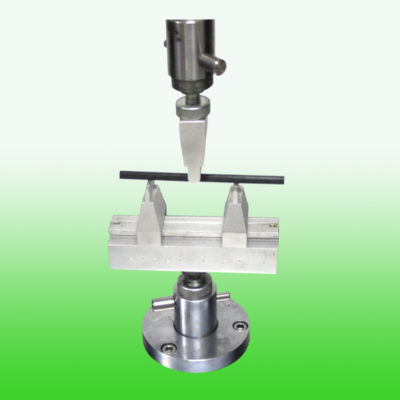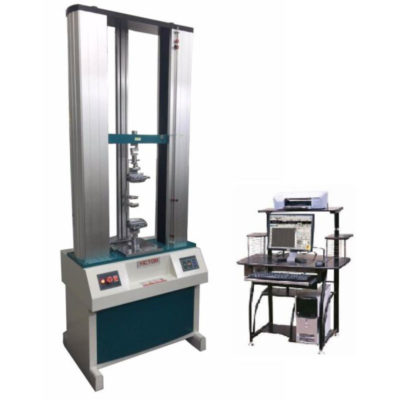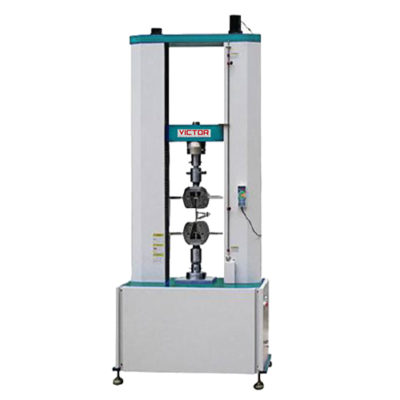ASTM is an international standards organization that is located in the United States of America. The purpose it was introduced to the industry is to publish technical standard agreements for various materials, product, systems and others. Among the ASTM standards that are often used in the industry is ASTM D790.
ASTM D790 Test Standard
Description
ASTM D790 is an international test standard designed for determining the flexural properties (bending properties) of reinforced and unreinforced plastics and electrical insulation materials. These test methods are generally applicable to both rigid and semi-rigid materials. These test methods also utilize a three-point loading system applied to a simply supported beam. This test is very useful for testing the stiffness of your material. As a result, you can choose materials that are not bent while supporting the load you need for your application. Manufacturing industries such as plastics industry often use this standard. Nowadays, plastics materials are now widely used in the industry. plastics have started to be used as structural materials in transportation equipment, such as automobiles and aircraft, due to their strength and light-weight nature. Nowadays, ASTM standards are highly preferred by both corporate or government bodies. In Malaysia, most industries use the ASTM D790 standard in their companies. The Malaysian government has also adopted this standard.
Basically, ASTM D790 measures the flexural properties of a material while under a bending strain or deflection. ASTM D790 has two different test procedures according to different types of materials.
Procedure A
- Which is the preferred method, employs a strain rate of 0.01 mm/mm/min.
Procedure B
- Employs a strain rate of 0.10 mm/mm/min and is intended for materials that may not break at 5% strain if tested at the lower rate.
Three-point bending test can be performed on using Universal Testing Machine (UTM). The following are the properties measured through ASTM D790:
- Tangent modulus
- Secant modulus
- Chord modulus
- Flexural strength
- Flexural Stress at Break
Specimens
1. Plastic materials
Grips
1. 3-point fixture

the diagram shows a 3-point bending test setup. The 3-point bending jig was mounted on an electromechanical material testing machine. The 3-point bending jig is an easy-to-use fixture that relies on the test machine to maintain alignment between the top and bottom parts. The 3-point test is used mainly for elastic and ductile materials.
Type of UTM machine
We recommend using UTM machines with a capacity of 5kN-100kN. It depends on the strength of the materials. We also recommend using smaller machines such as dual-column types.
1. VEW 2308

The machine is designed by mechanical-electrical integration, the composition of the force-measuring Sensor, transmitter, microprocessor, mechanism of load drive, computer and color inkjet printer. The high-precision electronic motor can be set to five-speed, the components are connected by plug-way, Floor-standing models, it is taken account of modern industrial design and ergonomics in modelling and Coating. It can be tested with all the materials in the stretch, compression, bending, shear, embedded relay, Peeling. tearing, crack, etc, such as rubber, plastics, leather, metal, nylon wire, fabric, paper, aerospace, packaging, construction, petrochemical, electrical, vehicle, etc.
The implementation of standards and standard configuration:
- GB/T4689.20-1996 Measuring fastness of leather’s adhesion
- QB/T2710-2005 Measuring leather’s expansion and the rate of elongation
- QB/T2711-2005 measuring tear force of leather
- QB/T2712-2005 measuring leather’s strength and stretch of spherical crack test
2. VEW 2302

VEW 2302 Computer Servo Type Universal Testing Machine is a new material testing machine that combined with the electronic technology and mechanical transmission, it has accurate load speed, range of force measurement, has high accuracy and sensitivity for the load, displacement measurement and control, it also can be tested the constant-velocity loading, constant- velocity displacement. This machine is simple to operate, especially suitable for controlling quality in the production line, this series of machine is mainly applied to test the non-metallic and metallic materials which the load is less than 30ton.
Main Function:
- Mainly applied to test the metallic and non-metallic materials in tension, compression, bending, shear, peel, tear or two-points extensions and others.
- Can be used for materials such as rubber, plastic, wire and cable, optical fiber and cable, safe belt, leather belt composite materials, plastic profiles, waterproof membrane, steel, copper, profiles, spring steel, bearing steel, stainless steel (as well as other high-hardness steel), castings, plate, strip, non-ferrous metal wire.
Test Procedure
- Prepare the specimens as described in the method
- 3-point bending test using 2 parts jigs. The first part is placed on the top and the second part is placed on the bottom.
- For the bottom, it has 2 parallel ‘lower’ anvils to support the specimen. For the top, A single ‘upper’ anvil positioned exactly half-way between the 2 ‘lower’ anvils is used to apply compressive load to the specimen to determine its material characteristics.
- Adjust the support span length that you find in the standard determined by your sample size.
- Place the test bar on the 3-point bend fixture
- Make sure the specimen is aligned.
- Zero all the testing machine before starting the test.
- Begin the test at the rate specified in the standard.
- End the test after bending to 5% strain or until the sample breaks.
